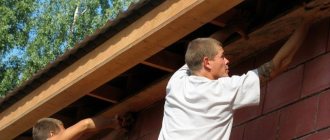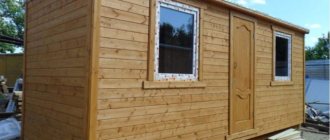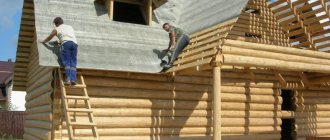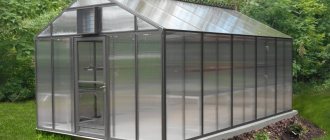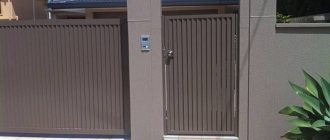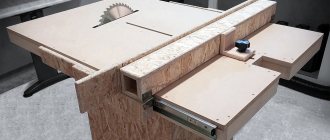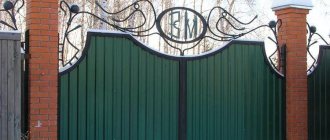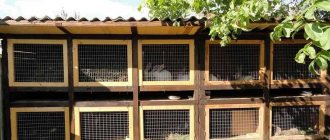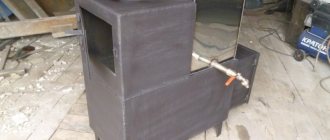Steel sheets that reliably imitate classical roofing ceramics in appearance are in high demand in the field of roofing. Lightness, priority dimensions that allow you to quickly cover large areas, a rich range of colors - qualities that are very attractive both for builders and for owners of low-rise buildings.
A significant addition to the technical and technological advantages is the cost of the material, which can significantly reduce the construction budget. However, not everyone is still familiar with this type of roofing that is so popular today. It will be useful for them to know what metal tiles are, how they are produced, and what their advantages are based on.
Advantages
Light weight is the main advantage. With a size of 1 square meter, the weight will be only 4-5 kg, which is an order of magnitude lighter than other materials.
Moreover, such material creates almost no load on the wall and foundation, which allows it to be used literally without restrictions.
Metal tiles require almost no maintenance. Since this is actually sheet metal, it is only necessary to occasionally check it for the reliability of the fasteners, and, if necessary, tint it.In addition, the sheets themselves are quite large and do not require extraordinary skills to install. This significantly reduces the cost of work and the time spent on it.
Bituminous shingles
Bituminous (or flexible) tiles Alta-Profile (photo No. 9)
How it is made
Bitumen shingles are one of the most popular types of soft roofing. This material is based on a dense fiberglass sheet, which is impregnated with high-quality bitumen with polymer additives. The following types of bitumen can be used:
- SBS-modified bitumen - with the addition of artificial rubber. This additive increases the elasticity of bitumen, resistance to severe frosts and high temperatures, as well as ultraviolet rays.
- Oxidized bitumen (enriched with oxygen). This bitumen is less flexible, but cheaper.
The top of the canvas is covered with fine-grained topping made of natural slate or basalt. Powder functions:
- Protects bitumen from ultraviolet radiation and strong heat (prevents bitumen from melting)
- Protects coatings from mechanical damage - birds, tree branches, hail, snow, etc.
- Increases strength
- Shapes the appearance - there are many options for color shades of the coating
The weight of bitumen shingles is from 6 to 15 kg/m2.
Advantages of bituminous shingles
Advantages of Alta-Profile tiles (photo No. 10)
- The warranty, depending on the manufacturer, ranges from 20 to 50 years.
- Suitable for installation of complex roofs. There is virtually no waste left during installation.
- Excellent sound insulation. Reduces noise from rain and hail.
- Fire resistance. The material does not burn well and does not ignite.
- Light weight. There is no need to strengthen the rafter structure.
- Large selection of shades
- The material is light and compact - easy to transport.
Disadvantages of bitumen shingles
- When laying bitumen shingles, a base of the underlying layer is required. This slightly increases the cost and scope of work.
- If the roof slope is less than 13 °, you need to use an additional underlay to protect the roof from moisture.
- Softens at high temperatures. It is not recommended to install bitumen shingles in hot weather. Also, in extreme heat, you should not move on such a roof.
- If the coating is damaged, it is difficult to make a partial replacement.
- Light weight. There is no need to strengthen the rafter structure.
- Large selection of shades
- The material is light and compact - easy to transport.
The underlying layer for flexible tiles from Alta-Profil (photo No. 11)
Single-pitch
It is simply a roof sloping on one side, actually the simplest one.
Tent
A similar design, except that in this case 4 triangles are used, which are united by one vertex.
Material calculation
Before proceeding with installation, you must first obtain the initial data and calculate the metal tiles. The size of the metal tiles and its sheets is selected based on the developed roof project.
For each type of roof, the calculation is made differently, and it is also necessary to take into account the specifics of the structure itself.
What else should you pay attention to?
In addition to the above parameters, when choosing a roofing material, you should pay attention to the following nuances:
- Storage conditions. For a number of products, restrictions are established on placement in packs and other long-term storage conditions.
- Installation features. When installing a metal roof, it is important to pay attention to the fastening technology. Many models have hidden fasteners. In addition, the useful size of the sheets depends on the overlap that will have to be provided at the joints. It is also necessary to clarify the restrictions on the maximum slope angle of the roof slope.
- Features of care. Attention should be paid to the degree of protection of the steel base if the integrity of the polymer coating is compromised.
When planning the construction or reconstruction of a roof, you must make sure that the selected metal tiles correspond to the climate zone. When purchasing a product, you should check its quality, absence of deformation, uniformity and integrity of the coating.
Installation components
Installing a metal roof involves multi-level installation. It is necessary to observe all the nuances so that the end result is a high-quality and reliable design.
Initially, the roof is thermally insulated so that during the cold season, cold wind does not pass through it into the house. Then comes the vapor barrier, it prevents the formation of condensation, and as a result, the destruction of the roof structure.
Next comes waterproofing, which will prevent water from entering the house during rain.
The penultimate stage is the production of a special sheathing; it should provide ventilation of the space under the roof.
Next, we will cover the roof with metal tiles.
Please note that the sheets of material should be overlapped so that the overlying sheet is located on top of the underlying sheet. This will not allow moisture to penetrate inside the structure, as it will flow down a kind of “ladder”.
In cases where the roof does not have a sloping shape, it makes sense to design and make special gutters. Their task is to remove water from the roof so that it does not linger there and destroy the material.
Profile geometry and insole depth
The metal tile profile is primarily a decorative element. The mechanical properties of sheets are affected by the very presence of relief, in particular by the presence of longitudinal and transverse stamping, which increases rigidity in all directions.
The aesthetic component of roofing is no less important, and manufacturers, realizing this, are constantly providing new types of relief. Let's take a closer look at them:
Monterrey
Monterrey is
the most popular type of metal tile relief among users .
It is very close to the shape of natural (piece) tiles, so the covering sheet with the Monterrey profile looks natural and attractive. There are profile options with symmetrical and asymmetrical waves. Cascade
The Cascade profile occupies a special place among the types of metal tiles due to its clear and strict shape.
It has strict straight lines and resembles a chocolate bar .
The roofing sheet looks very attractive and unique. The advantages of the profile include the large width of the installation site, which increases the possibility of economical cutting. Convenient for designing complex roof structures. Modern
Modern is
an offshoot of the Monterrey waveform .
It is distinguished by sharper breaks in the edges of the sheet. Otherwise, the profile is close to the main relief options of classic varieties of metal tiles, and has standard sheet sizes and mounting areas. There are many types of metal tile profiles and new options are constantly appearing. There is no point in listing them completely, since they have no fundamental differences and are variants of the same relief.
Glossy polyester
It is the most popular type of metal tile. In fact, 80% of the total volume is precisely this type. First of all, it attracts buyers at a relatively low price compared to other types.
And at the same time, it has quite tolerable characteristics, which makes it very popular. The average service life ranges from 7 to 10 years of operation.
Manufacturers in the Moscow region
The Moscow region has quite a few production organizations engaged in the production of metal tiles. In this matter, the regional affiliation of the material is not very important; the technology and materials used in manufacturing are much more important. Modern equipment allows you to obtain a high-quality product regardless of where it is installed.
The products of craftsmen from the Moscow region have stable parameters and are widely in demand on the market due to their balanced cost and quality. We work with M28 UNIKMA metal tiles and are certified specialists and winners of the UNIKMA 2018 roofers tournament.
Matte polyester
More resistant to various influences.
This is due to the thicker layer of the material itself, as well as the addition of Teflon to its base. It provides increased resistance to various types of natural and elemental influences.
The service life is about 15 years, but the downside is the small number of commercially available flowers. However, some decide to simply repaint the material in the color they like.
Choice of polymer coating
All types of external protective and decorative coatings for corrugated steel roofing are made from polymer compounds. The composition of polymer shells is different, since they have to solve different problems and work under different operating conditions.
PE – polyester
Decorative and protective shell created on the basis of polyester dye. Among its significant advantages are a wide range of colors, excellent resistance to UV irradiation, and the ability to retain the original color significantly longer than the warranty period announced by the manufacturer.
Metal tile roofing, made of material with a polyester shell, can be installed in all latitudes of our country. It can withstand frosts of -60° and does not lose performance at +120°C. In addition, it attracts with its affordable price, thanks to which it is actively in demand in both private and commercial construction.
However, during the installation process, the polymer coating must be treated with extreme caution, because it is applied in a layer of only 25 microns, and 5 microns of this layer is a primer laid on the metal sheet. Accidentally scratching such a thin shell is easier than it might seem at first glance. Therefore, it is better to carry out installation work without removing the polyethylene applied to the outside.
PEMA – matte polyester
Product developed on the basis of regular polyester. When applying this type of coating, its scales are applied in different directions, so that the visual effect is formed in an unusual and very interesting way. As a result, the shell of metal sheets has absolutely no shine or glare.
A specific technology allows you to optically “deepen” the color and give it a certain noble velvety quality. Metal tiles with a matte polymer coating are more similar to natural building ceramics, which justifies its popularity.
Roofing with matte polyester is more expensive than the previous version. The protective and decorative PEMA shell is applied in a layer of 35 microns, and a primer is also used. This coating is more difficult to damage during installation.
PVC (PVC) - polyvinyl chloride or plastisol
One of the most visually impressive coatings, it gives the surface not only a pleasant color, but also forms a relief that imitates the texture of natural materials. The application layer reaches 200 microns, which is why this type of shell resists mechanical stress best of all.
Thanks to the composition and thickness of the polymer protection, the roof is not afraid of atmospheric influences, acid rain, dusty winds, and is not threatened by corrosion.
True, this option also has disadvantages - PVC does not retain color very well under sunlight. Taking into account this disadvantage, in the southern regions it is recommended to prefer light-colored material for roofing.
Pural - pural
This is polyurethane enriched with polyamide. Each of the components of a complex polymer compound solves its own problems. The introduction of polyamide significantly increases resistance to mechanical stress and copes with its duties excellently, despite the fact that the total thickness of this shell is less than PVC, being only 50 microns.
Polyurethane is responsible for maintaining the original color, which is highly resistant to UV radiation. Roofing with pural protection of any color can be installed in the south of the country; it works perfectly at +120°C.
At the moment, this is the most popular material, sold at an affordable price and pleasing with impeccable performance qualities.
Armacor - armakor
In terms of technical and physical-mechanical characteristics, armacore is very similar to pural, although it is inferior to it in terms of corrosion resistance. To increase it, a thicker layer of primer is applied to the metal surface. Metal tiles with this protective shell are preferred in settlements on the sea coast.
To ensure color stability, polyurethane is added to the coating, which ultimately allows the material to be used in southern latitudes. The same component provides resistance to various chemical influences: all kinds of acid rain, which often falls in industrial areas.
PUR – thick layer polyester
This is polyester, which contains polyamide. The thick polyester shell is less resistant to sunlight and precipitation typical of industrial regions, despite the fact that it is applied in a layer of up to 48 microns.
In addition, spots of rust will appear on it earlier if a house with such a roof is built next to a chemical plant, and it fades much faster than pural.
PVDF – polyvinyl dente fluoride
Also a complex polymer compound, modified with acrylic to improve technical properties. Smooth and pleasant to the touch, the shell comes in both glossy and matte.
The assortment of roofing with the specified decorative protection includes the most extensive range of colorful solutions. The use of multi-layer application technology and the use of varnishes allows you to achieve a very original effect. Metal tiles with PVDF coating very accurately imitate aluminum, bronze and gold.
The disadvantages quite rightly include insufficient mechanical strength, which is associated with the insignificant thickness of the decorative protective layer. It is only 27 microns. But this roof copes perfectly with rusting and fading.
Metal tiles with PVDF or PVD 2F will not be harmed by acid precipitation, exhaust gases and fumes from coal processing boilers. The outer shell perfectly prevents the impact of alkalis and salts on the steel base. This is the best choice for furnishing urban buildings.
In addition to the long-known and fairly popular protective and decorative shells of steel roofing sheets, manufacturers regularly offer new options. For obvious reasons, the formulas are hidden, as are the production technologies.
When selecting material for a roof, in addition to external indicators, it is necessary to take into account the type of polymer used in the manufacture and the dimensions of the sheets presented for sale.
Plasistol
The most durable coating. It has a thickness of 22 microns. In appearance, it can be stylized to resemble tree bark and even leather.
However, due to the specific surface coating, it is highly vulnerable to direct sunlight. Under their influence, the appearance deteriorates, but the declared characteristics do not deteriorate.
Prices
The cost of metal tiles depends on the thickness of the sheet, coating, type of profile, and manufacturer. It also differs by region. The cheapest material is offered by Russian manufacturers (RUB per 1 m2):
- Grand Line. Quinta - from 370 rubles, Modern - from 275 rubles, Classic - from 350 rubles;
- Metal profile. Monterrey - from 303 rubles, Supermonterrey - from 260 rubles, Cameo - from 380 rubles.
- Finnish company Ruukki. Adamate - from 770 rubles, Decorray - from 820 rubles, Finnera - from 760 rubles, Monterrey Eco - from 680 rubles, Elite - from 1260 rubles.
Economy class metal tiles in the Russian Federation can be purchased at a price in the range of 250–575 rubles/sq.m.
Pural
It is inferior in strength to plasistol, but in other parameters it is much superior to all other types.
It is highly resistant to humidity, high temperatures, sudden changes, solar radiation and various types of mechanical stress.
Favorites
Among the manufacturers of this material, Monterrey metal tiles are head and shoulders above all others. Excellent quality material, affordable prices and a large selection of a wide variety of types for any task.
Monterrey has been a market leader in this area for many years, and customers are happy to trust this company to take care of their roof.
Photos of a roof made of Monterrey metal tiles can be viewed and compared on the Internet, visually assessing the differences between the types, and roughly assessing the type suitable for a particular purpose.
We looked at the main nuances of the question “how to cover a roof with metal tiles?”, and examined a number of types of material, their advantages and disadvantages.
Noise insulation
One of the generally accepted disadvantages of a metal roof (not only metal tiles, but also corrugated or corrugated sheets) is loud noise during rain . The problem can only be solved by installing a heat insulator, which at the same time serves as a sound insulator.
There are no other solutions to the problem. The best option, although the most expensive, is to use liquid polyurethane foam , which is applied directly to the roof from the inside (attic) side. The use of conventional materials is somewhat worse in terms of sound insulation, but is quite acceptable.
Photo of a metal roof
Total
Category: Construction
